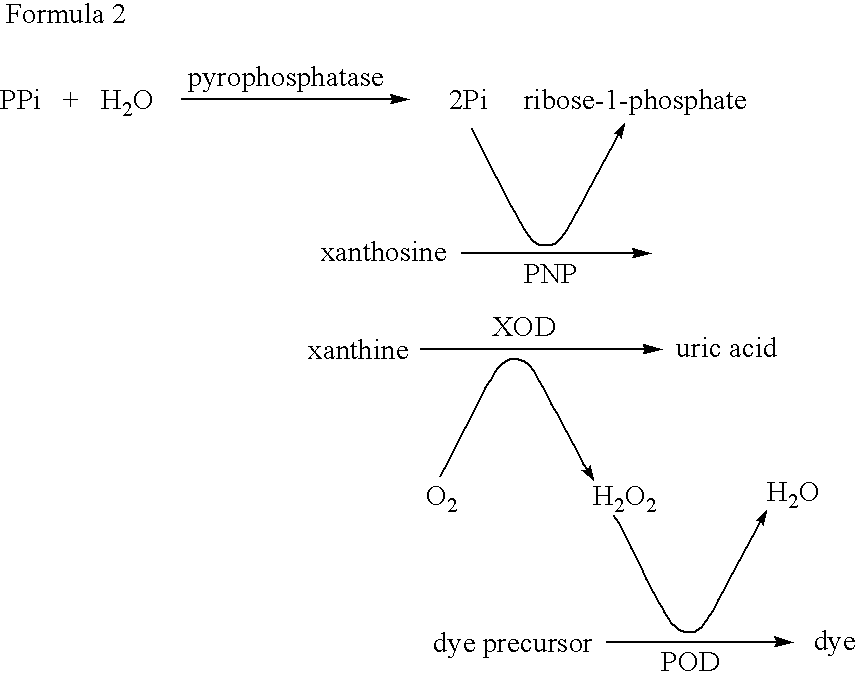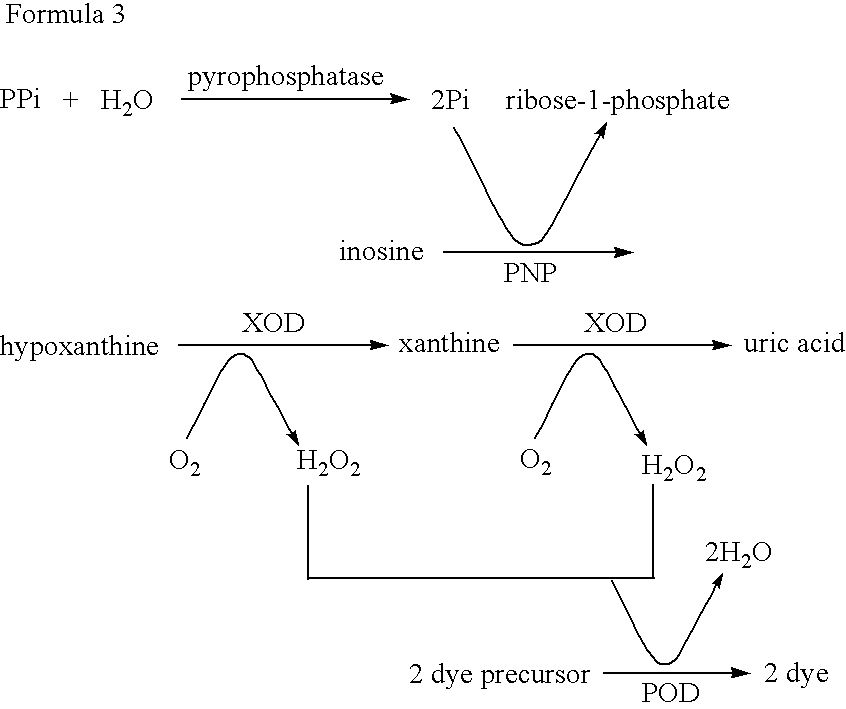Method for detecting bacteria of the genus Mycobacterium (acid-fast bacteria) and kit for the same
- Summary
- Abstract
- Description
- Claims
- Application Information
AI Technical Summary
Benefits of technology
Problems solved by technology
Method used
Image
Examples
example 1
Detection of the Genus Mycobacterium (Acid-Fast Bacteria) Using Pyrophosphoric Acid Slide (Performance Confirmation Using Cultured Bacterial Strain)
[0087] Cultured bacterial samples that had been previously identified as being of the bacterial species Mycobacterium tuberculosis (Mtb), Mycobacterium avium (Ma), or Mycobacterium intracellulare (Mi) were prepared. After washing the harvested bacteria, genomic DNA was extracted according to R. Boom et al's method (Journal of Clinical Microbiology vol. 28, No. 3, p. 495 (1990)).
(2) PCR Amplification Reaction
[0088] A PCR amplification reaction was performed using the DNA solution prepared in (1) above under the following conditions.
[0089] t2 (upper: for Mtb detection): 5′-ataccggataggaccacg-3′ (SEQ ID NO: 10) [0090] a2 (upper: for Ma detection): 5′-ataccggataggacctca-3′ (SEQ ID NO: 11) [0091] i2 (upper: for Mi detection): 5′-aataccggataggaccttt-3′ (SEQ ID NO: 12) [0092] M2 (lower: common among all 3 bacterial ...
example 2
Detection of the Genus Mycobacterium (Acid-Fast Bacteria) Using Pyrophosphoric Acid Slide (Performance Confirmation Using Cultured Bacterial Strain)
[0101] Cultured bacterial samples that had been previously identified as being of the bacterial species M. tuberculosis (Mtb), M. avium (Ma), M intaracellulare (Mi), or M. kansasii (Mk) were prepared. After washing the harvested bacteria, genomic DNA was extracted according to R. Boom et al's method (Journal of Clinical Microbiology vol. 28, No. 3, p. 495 (1990)).
(2) PCR Amplification Reaction
[0102] A PCR amplification reaction was performed using the DNA solution prepared in (1) above under the following conditions.
[0103] k (upper: Mk detection): 5′-ataccggataggaccacttg-3′(SEQ ID NO: 26) [0104] M5 (lower): 5′-cgtcctgtgcatgtcaaa-3′(SEQ ID NO: 28)
[0105] The PCR reaction was performed with combinations of primers for detecting each bacterium and specimens as listed below.
TABLE 7Specimen typePCR primerNegativ...
PUM
| Property | Measurement | Unit |
|---|---|---|
| Electrical conductance | aaaaa | aaaaa |
| Volume | aaaaa | aaaaa |
| Volume | aaaaa | aaaaa |
Abstract
Description
Claims
Application Information
 Login to View More
Login to View More - R&D
- Intellectual Property
- Life Sciences
- Materials
- Tech Scout
- Unparalleled Data Quality
- Higher Quality Content
- 60% Fewer Hallucinations
Browse by: Latest US Patents, China's latest patents, Technical Efficacy Thesaurus, Application Domain, Technology Topic, Popular Technical Reports.
© 2025 PatSnap. All rights reserved.Legal|Privacy policy|Modern Slavery Act Transparency Statement|Sitemap|About US| Contact US: help@patsnap.com



